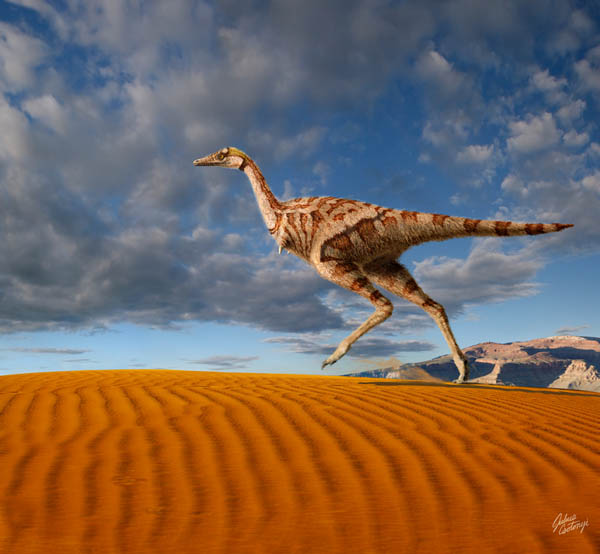The First Single-fingered Dinosaur Found in Inner Mongolia, China
A new species of dinosaur the size of a parrot and with only one finger has been unearthed in Inner Mongolia, China.
Scientists named the new dinosaur Linhenykus monodactylus, after Linhe, a nearby city in Inner Mongolia, People’s Republic of China. The work is published online today in Proceedings of the National Academy of Sciences (PNAS).
The new dinosaur belongs to the Alvarezsauroidea, a family within the carnivorous dinosaurian group Theropoda. Theropods gave rise to modern birds and include famous dinosaurs such as Tyrannosaurus and Velociraptor.
Linhenykus most likely grew to a few feet tall and weighed only as much as a large parrot. The new theropod is unusual in having just one large claw on each of its hands, which may have been used to dig out insects. This feature makes the specimen the only known dinosaur with one finger and highlights a complex pattern of evolution in the hands of theropods.
An international team of palaeontologists led by Xing Xu of the Institute of Vertebrate Plaeontology and Paleoanthropology, Chinese Academy of Sciences, found the fossil preserved in rocks from the Upper Cretaceous Wulansuhai Formation, which is located on the border between Mongolia and China. The formation dates to 84-75 million years ago and has yielded a rich trove of vertebrate fossils including the recently discovered theropod Linheraptor exquisitus. The authors uncovered a partial skeleton from the site, which included bones of the vertebral column, the forelimb, a partial pelvis and nearly complete hind limbs.
Michael Pittman, from the Department of Earth Sciences at University College London, co-author and discoverer of the specimen said: “Non-avian theropods start with five fingers but evolved to have only three fingers in later forms. Tyrannosaurs were unusual in having just two fingers but the one-fingered Linhenykus shows how extensive and complex theropod hand modifications really were.”
Most theropod dinosaurs have three fingers on the hand, but alvarezsauroids other than Linhenykus reduce the two outer fingers to tiny, apparently useless structures. The presence of only one finger in Linhenykus, which is hypothesized to be a relatively primitive alvarezsauroid, shows that these vestigial fingers come and go during the evolution of the group. The reasons for the loss of the two outer fingers in Linhenykus are unclear, but are likely related to an increased dependence on the first finger, as evidenced by its large size and presumably strong muscle attachments.
Jonah Choiniere, co-author and co-discoverer of the specimen from the Division of Paleontology at the American Museum of Natural History said: “Vestigial structures, like legs in whales and snakes, may appear and disappear seemingly randomly in the course of evolution. Linhenykus highlights the vestigiality of the outer fingers of advanced alvarezsauroids and underscores the complexity in evolution of these vestigial fingers.”
Linhenykus lived with closely-related and similarly-sized theropod dinosaurs, but the specializations of its skeleton may reflect differences in behavior or foraging strategy. Linhenykus also lived alongside small mammals, lizards, and clubbed (ankylosaurs) and horned dinosaurs (ceratopsians).


Download attachments: